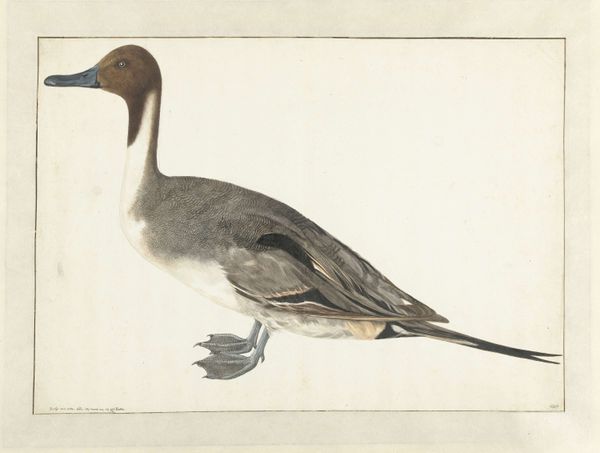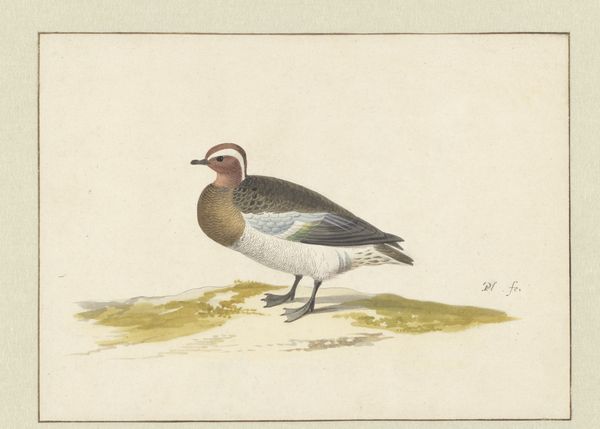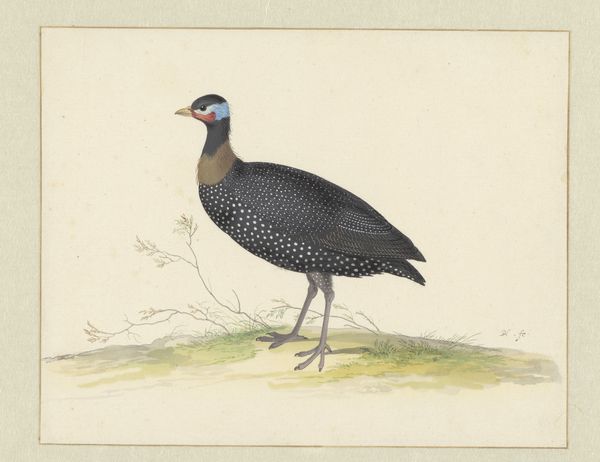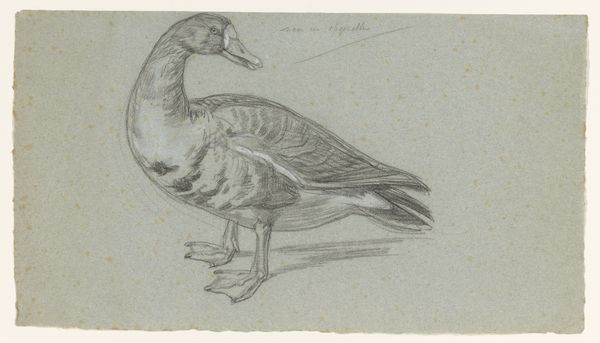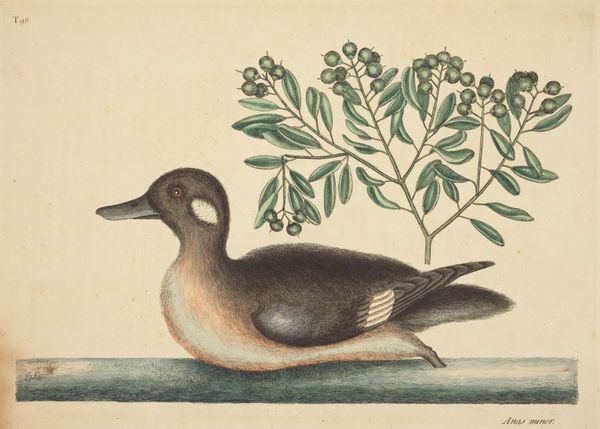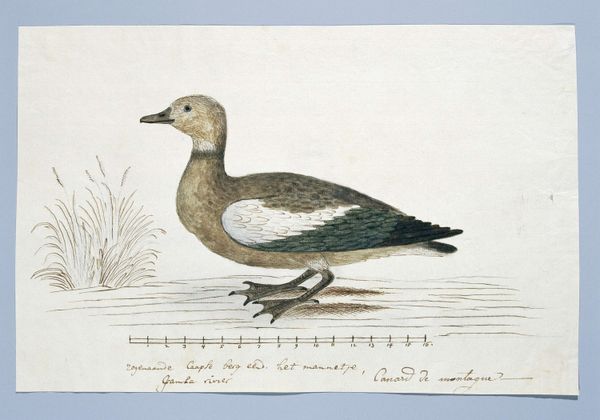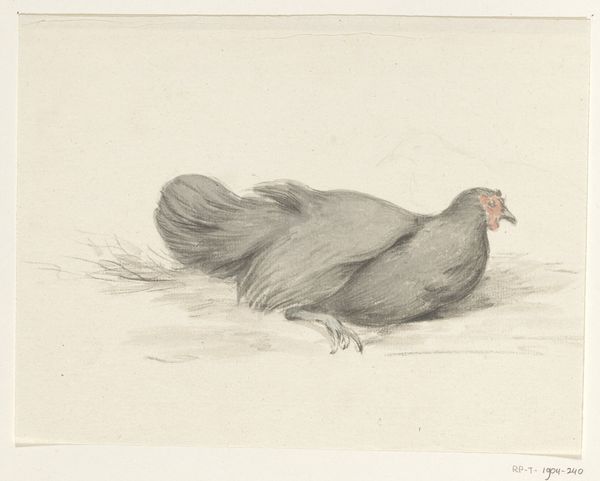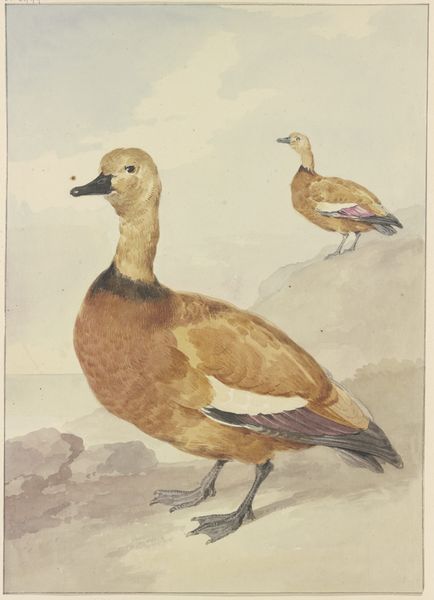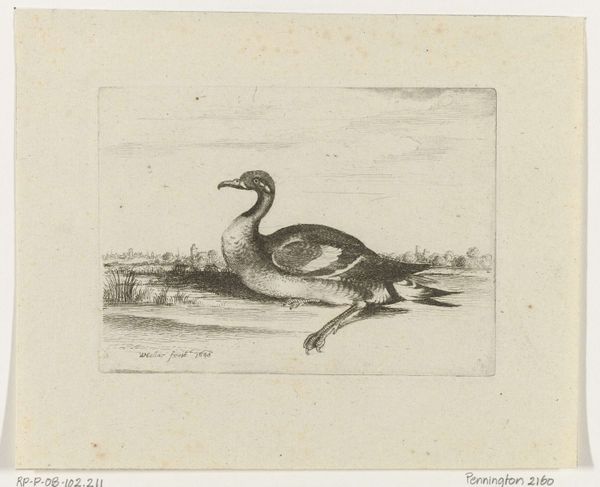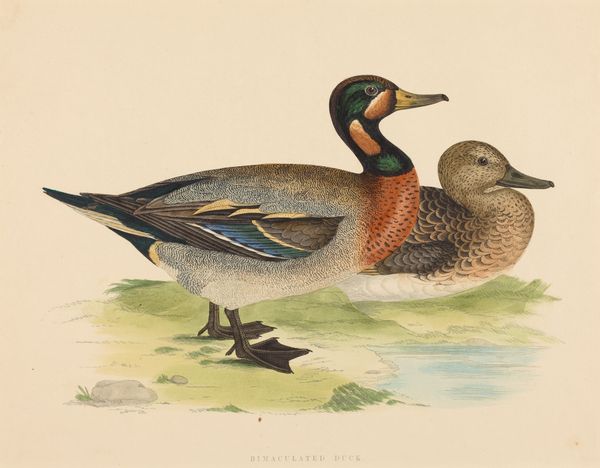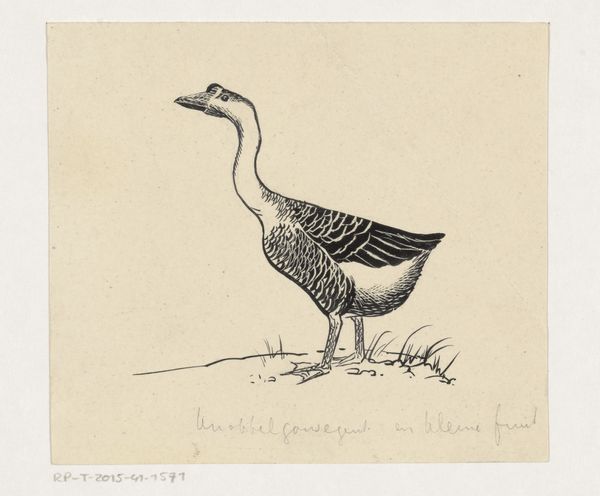
drawing, watercolor
#
drawing
#
animal
#
watercolor
#
watercolour illustration
#
botanical art
#
watercolor
#
realism
Dimensions: height 137 mm, width 207 mm
Copyright: Rijks Museum: Open Domain
Editor: Here we have "Eend, naar rechts", or "Duck, facing right," by Jean Bernard, sometime between 1775 and 1833. It’s a lovely watercolor drawing. It feels so simple and direct, almost like a child's drawing. What stands out to you in this piece? Curator: Well, on the surface, it presents a seemingly straightforward depiction of nature. But consider the context: the late 18th and early 19th centuries were periods of intense scientific exploration and classification. Images like these weren't just pretty pictures. How might scientific illustration influence its reception and purpose? Editor: So, you're suggesting this drawing may have had a function beyond pure aesthetics? Curator: Precisely. Botanical and zoological illustrations were crucial for documenting new discoveries and advancing scientific knowledge. Drawings, like this duck, became tools for understanding and controlling the natural world, circulating within scientific communities to define species and support theories. Note the almost clinical precision in rendering the bird's features. Is there anything naive or innocent about that? Editor: I see your point. It's less about a romantic view of nature and more about precise record-keeping. So, who was the audience for these kinds of images? Were they widely accessible? Curator: Initially, these illustrations often circulated among elite circles of scientists and collectors, reflecting power structures. Over time, reproductions became more widespread, influencing popular understanding of the natural world. What implications did the control and access of this visual knowledge create? Editor: This definitely gives me a new appreciation for what appears to be just a simple duck drawing! It shows how images were tools for scientific and social control back then. Curator: Indeed. By considering its historical and social role, we understand how art shapes our perceptions of the world around us. I find that powerful, and I learned to see art beyond face value through this lens.
Comments
No comments
Be the first to comment and join the conversation on the ultimate creative platform.
